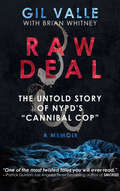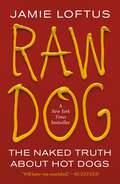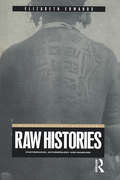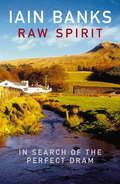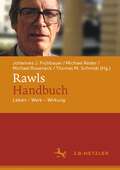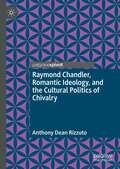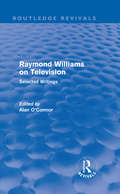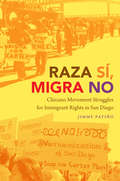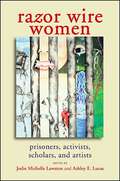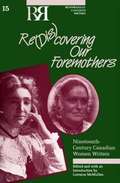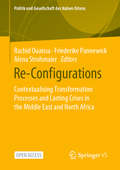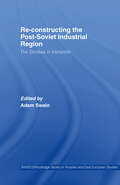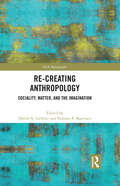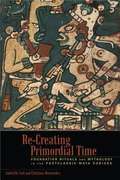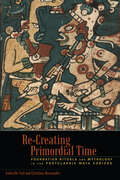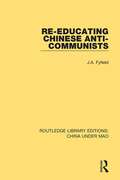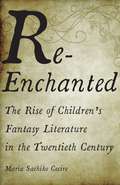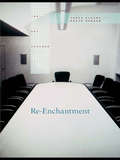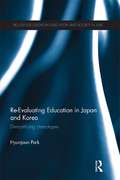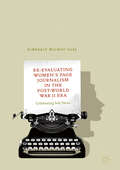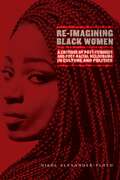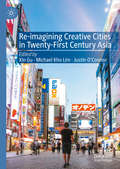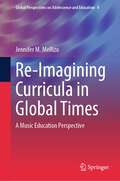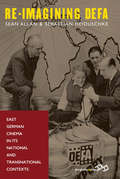- Table View
- List View
Raw Deal: The Untold Story of NYPD's "Cannibal Cop"
by Brian Whitney Gil Valle&“One of the most twisted tales you will ever read . . . a story of cannibal fetishes, a terrified wife, lying FBI agents, a false conviction.&”—Patrick Quinlan, Los Angeles Times bestselling author *Optioned in February 2019 for a motion picture*Raw Deal is the untold story of former New York City police officer Gil Valle, who in 2012 became known throughout the world as &“The Cannibal Cop.&” It is part the controversial saga of a man who was imprisoned for &“thought crimes,&” and a look into a world of dark sexuality and violence that most readers don&’t know exists, except maybe in their nightmares.After Valle&’s arrest, media coverage exploded in a frenzy of lurid tabloid headlines and stories about the cop charged with planning to kidnap, torture, rape . . . and eat . . . women, including his own wife. But here&’s the fascinating part; there was no such plan in reality. Valle faced life in prison for his charges and served 21 months for nothing more than having online chats about his fantasies. He was finally exonerated of all charges.Raw Deal raises the question of when does thought become a crime? A question that goes beyond his perverse sexuality to answers society must deal with in order to meet the challenge of terrorism. It will challenge the reader&’s beliefs about free speech, the right to privacy, and government&’s role in watching over us.WARNING: This book contains graphic fantasy material of a sexual and violent nature. It is intended for Mature Audiences. &“A big part of what makes this book fascinating is seeing the contrast between Valle&’s extreme interests and his normal life.&”—Cultured Vultures
Raw Dog: The Naked Truth About Hot Dogs
by Jamie LoftusA NEW YORK TIMES AND INDIE BESTSELLER!Part travelogue, part culinary history, all capitalist critique—comedian Jamie Loftus's debut, Raw Dog, will take you on a cross-country road trip in the summer of 2021, and reveal what the creation, culture, and class influence of hot dogs says about America now.A Best Book of the Year from NPR and Vulture. Featured in: NPR Weekend Edition • Bon Appétit • Oprah Daily • Glamour • NY Mag • Splendid Table • The Wall Street Journal • Eater • Betches • USA Today • Boston Globe • Eater • Slate • The Next Big Idea Club • Buzzfeed and more “Wise and funny” —ANDY RICHTER • “Revealing, funny, sad, horny, and insatiably curious” —SARAH MARSHALL • “A wild ride” —ROBERT EVANS • “Deeply incisive and hilariously honest” —JACK O’BRIEN • “Gonzo yet vulnerable” —GABE DUNN • “Hot dog Moby-Dick” —BRANSON REESE • “One of the freshest and most insightful new comedic voices of this decade.” —LINDSAY ELLIS Hot dogs. Poor people created them. Rich people found a way to charge fifteen dollars for them. They’re high culture, they’re low culture, they’re sports food, they’re kids' food, they’re hangover food, and they’re deeply American, despite having no basis whatsoever in America's Indigenous traditions. You can love them, you can hate them, but you can’t avoid the great American hot dog.Raw Dog: The Naked Truth About Hot Dogs is part investigation into the cultural and culinary significance of hot dogs and part travelogue documenting a cross-country road trip researching them as they’re served today. From avocado and spice in the West to ass-shattering chili in the East to an entire salad on a slice of meat in Chicago, Loftus, her pets, and her ex eat their way across the country during the strange summer of 2021. It’s a brief window into the year between waves of a plague that the American government has the resources to temper, but not the interest.So grab a dog, lay out your picnic blanket, and dig into the delicious and inevitable product of centuries of violence, poverty, and ambition, now rolling around at your local 7-Eleven.The hardcover edition of Raw Dog: The Naked Truth About Hot Dogs includes gorgeous endpapers, an illustrated case, as well as illustrations by the author throughout."Raw Dog will leave you nourished." —BuzzFeed"You will certainly never read a funnier book about taking a hot dog-themed road trip across America." —Glamour"A journey both silly and profound." —Vulture, Best Books of 2023At the Publisher's request, this title is being sold without Digital Rights Management Software (DRM) applied.
Raw Histories: Photographs, Anthropology and Museums (Materializing Culture)
by Elizabeth EdwardsPhotographs have had an integral and complex role in many anthropological contexts, from fieldwork to museum exhibitions. This book explores how approaching anthropological photographs as 'history' can offer both theoretical and empirical insights into these roles. Photographs are thought to make problematic history because of their ambiguity and 'rawness'. In short, they have too many meanings. The author refutes this prejudice by exploring, through a series of case studies, precisely the potential of this raw quality to open up new perspectives. Taking the nature of photography as her starting point, the author argues that photographs are not merely pictures of things but are part of a dynamic and fluid historical dialogue, which is active not only in the creation of the photograph but in its subsequent social biography in archive and museum spaces, past and present. In this context, the book challenges any uniform view of anthropological photography and its resulting archives. Drawing on a variety of examples, largely from the Pacific, the book demonstrates how close readings of photographs reveal not only western agendas, but also many layers of differing historical and cross-cultural experiences. That is, photographs can 'spring leaks' to show an alternative viewpoint. These themes are developed further by examining the dynamics of photographs and issues around them as used by contemporary artists and curators and presented to an increasingly varied public. This book convincingly demonstrates photographs' potential to articulate histories other than those of their immediate appearances, a potential that can no longer be neglected by scholars and institutions.
Raw Spirit: In Search of the Perfect Dram
by Iain BanksA fascinating journey through Scotland's famous distilleries with legendary author Iain Banks No true Scotsman can resist the allure of the nation's whisky distilleries. In an absorbing voyage as interesting to non-drinkers as to true whisky connoisseurs, sci-fi and literary author Iain Banks explores the rich heritage of Scottish whisky, from the largest and most famous distilleries to the smallest, most obscure operations.Whisky is more than a drink: it's a culture, a binder that joins together people, places and products far across Scotland's rugged terrain. Switching from cars to ferries to bicycles, Banks crisscrosses his homeland, weaving an engrossing narrative from the strange people, fascinating traditions, and downright bizarre places he encounters on his journey down Scotland's great golden road.
Rawls-Handbuch: Leben – Werk – Wirkung
by Michael Reder Johannes J. Frühbauer Michael Roseneck Thomas M. SchmidtMit seiner Theorie der Gerechtigkeit löste John Rawls (1921–2002) eine Renaissance der normativen politischen Theorie aus, da sie Fragen nach der gerechten Verteilung von Gütern und Chancen wieder als eine zentrale philosophische Aufgabe ernst nahm. Es gilt als eines der einflussreichsten Werke der politischen Philosophie des 20. Jahrhunderts und kann nach wie vor als konstruktiver Beitrag zu aktuellen Diskussionen um Verteilungsgerechtigkeit gesehen werden. Mit seinem zweiten Hauptwerk Politischer Liberalismus hat er die Debatte eröffnet, wie wir unter Bedingungen einer pluralistischen Gesellschaft auf vernünftige Weise gemeinsam leben können. Das Werk von Rawls besitzt eine zentrale Bedeutung für die politische Philosophie der Gegenwart und für angrenzende Disziplinen wie Sozialwissenschaften, Rechtswissenschaften oder Theologie. Das Handbuch ist das erste deutschsprachige Nachschlagewerk, welches auf dem aktuellen internationalen Forschungsstand das Gesamtwerk von Rawls in seiner Entwicklung darstellt, zentrale Begriffe erläutert und zudem die wichtigsten Referenzen und Diskussionen vorstellt.
Raymond Chandler, Romantic Ideology, and the Cultural Politics of Chivalry
by Anthony Dean RizzutoRaymond Chandler, Romantic Ideology, and the Cultural Politics of Chivalry responds to the general consensus that Philip Marlowe represents a chivalric knight out of romance. The book argues that this commonplace reading requires a stunningly rosy rewriting of Marlowe, knighthood, chivalry, and romance. The book offers a history of the cultural politics of chivalry from the Middle Ages through British Romanticism to the modern United States, exposing the elitism, violent masculinism, racism, and ethno-national othering harbored within. Rizzuto also considers the survival of the chivalric ideology after World War I, and argues that the narrative of the Great War destroying chivalry rewrites the ghastly history of warfare. Touching on Chandler throughout these cultural histories, the book then directly confronts the question of knighthood and romance in the Marlowe novels. Rizzuto identifies an explicit rejection of romance in the service of hardboiled gender, class, and genre norms, including a seldom-remarked pattern of violence against women and sexual assault. The volume concludes by offering some ideas about Chandler’s motivations and the reception of the Marlowe novels.
Raymond Williams on Television: Selected Writings (Routledge Revivals)
by Raymond WilliamsFirst Published in 1989, this work is based around a monthly TV column which Raymond Williams wrote for The Listener between 1968 and 1972. Those were the years of the Prague Spring, of anti-Vietnam war demonstrations, of fighting in Cambodia and Northern Ireland, of hope for McGovern in the United States and attacks on the Wilson Labour Government in Britain. In The Listener articles Williams comments on all of these events, providing a rare glimpse not only into the events of his daily life but also into the continuing development of a personal sociology of culture. The articles also discuss such television forms as detective series, science programmes and sports, travelogue, education, gardening, and children’s programming. The book also includes Williams’ key lecture "Drama in a Dramatised Society", which sets a framework for his analysis; a London Review of Books piece on the Falklands/Malvinas adventure as a "tele-war"; and an interview with Williams on television and teaching. Cited by The Guardian as "The foremost political thinker of his generation", Williams’ writing amounts to a primer on ways of watching television and of critiquing its profound social and political impact.
Raza Sí, Migra No: Chicano Movement Struggles for Immigrant Rights in San Diego (Justice, Power, and Politics)
by Jimmy PatiñoAs immigration from Mexico to the United States grew through the 1970s and 1980s, the Border Patrol, police, and other state agents exerted increasing violence against ethnic Mexicans in San Diego's volatile border region. In response, many San Diego activists rallied around the leadership of the small-scale print shop owner Herman Baca in the Chicano movement to empower Mexican Americans through Chicano self-determination. The combination of increasing repression and Chicano activism gradually produced a new conception of ethnic and racial community that included both established Mexican Americans and new Mexican immigrants. Here, Jimmy Patino narrates the rise of this Chicano/Mexicano consciousness and the dawning awareness that Mexican Americans and Mexicans would have to work together to fight border enforcement policies that subjected Latinos of all statuses to legal violence.By placing the Chicano and Latino civil rights struggle on explicitly transnational terrain, Patino fundamentally reorients the understanding of the Chicano movement. Ultimately, Patino tells the story of how Chicano/Mexicano politics articulated an "abolitionist" position on immigration--going beyond the agreed upon assumptions shared by liberals and conservatives alike that deportations are inherent to any solutions to the still burgeoning immigration debate.
Razing Africville
by Jennifer NelsonIn the 1960s, the city of Halifax razed the black community of Africville under a program of urban renewal and 'slum clearance.' The city defended its actions by citing the deplorable living conditions in Africville, ignoring its own role in the creation of these conditions through years of neglect and the refusal of essential services. In the 1980s, the city created a park on Africville's former site, which has been a place of protest and commemoration for black citizens since its opening. As yet, however, the city has not issued a formal apology to Africville residents and has paid no further compensation.Razing Africville examines this history as the prolonged eviction of a community from its own space. By examining a variety of sources - urban planning texts, city council documents, news media, and academic accounts - Jennifer J. Nelson illustrates how Africville went from a slum to a problem to be solved and, more recently, to a public space in which past violence is rendered invisible. Reading historical texts as a critical map of decision-making, she argues that the ongoing measures taken to regulate black bodies and spaces amount to a 'geography of racism.' Through a geographic lens, therefore, she manages to analyse ways in which race requires space and how the control of space is a necessary component of delineating and controlling people.A much needed re-examination of an important historical example, Razing Africville applies contemporary spatial theory to the situation in Africville and offers critical observations about the function of racism.
Razor Wire Women: Prisoners, Activists, Scholars, and Artists (SUNY series in Women, Crime, and Criminology)
by Ashley E. Lucas Jodie Michelle LawstonOffering nuanced portraits of women's lives inside razor wire and prison walls, Razor Wire Women puts incarcerated women in dialogue with scholars, artists, educators and activists who live outside of prisons but work on issues connected to the prison industrial complex. Women make up the fastest-growing group of the U.S. prison population, yet prison scholarship largely overlooks the struggles of incarcerated women, and their voices are often silenced both in and out of the prison infrastructure. From the vantage points of those both inside and outside of prisons, this collection of essays and art illuminates many of the distinct experiences and concerns of incarcerated women, including those of girls in prison, abuse and rape, the policing of women, incarcerated motherhood, mental health issues in prisons, incarcerated women's artistic and cultural production, and prisons' impact on families, health, and sexuality. Combining the transcendence, hope and clarity of art with powerful analytical and conceptual tools, Razor Wire Women reveals the gendered dimensions of the incarceration now experienced by a growing number of women in the U.S.
Re(dis)covering Our Foremothers: Nineteenth-century Canadian Women's Writers
by Lorraine McmullenThe modern literary searchlight has flushed out Canada's long neglected nineteenth century female writers. New critical approaches are advocated and others are encouraged to take on the difficulties - and rewards of research into the lives of our foremothers.
Re-Configurations: Contextualising Transformation Processes and Lasting Crises in the Middle East and North Africa (Politik und Gesellschaft des Nahen Ostens)
by Friederike Pannewick Rachid Ouaissa Alena StrohmaierThis edited volume is an open access title and assembles both the historical consciousness and transformation of the MENA region in various disciplinary and topical facets. At the same time, it aims to go beyond the MENA region, contributing to critical debates on area studies while pointing out transregional and cultural references in a broad and comparative manner.
Re-Constructing the Post-Soviet Industrial Region: The Donbas in Transition (BASEES/Routledge Series on Russian and East European Studies)
by Adam SwainThis book examines the political economy of attempts to restructure the Donbass, one of the Soviet Union's most important 'old economy' 'rustbelt' industrial regions. It shows how local interest groups have successfully frustrated the central government's and the World Bank's proposed market-oriented restructuring, and how a manufacturing-based regional economy is surviving, partially, with restructuring postponed.
Re-Creating Anthropology: Sociality, Matter, and the Imagination (ASA Monographs)
by David N. GellnerThis book makes a notable contribution to discussions of what anthropology is and should be in the twenty-first century through a reconsideration, from diverse sub-disciplinary and interdisciplinary perspectives, of the interactions between sociality, matter, and the imagination. It explores the imagination in its social contexts, how it is put to work, and how, in its embodied and material forms, it works in practice. The chapters provide detailed case studies, including film-making in Egypt; spirit-possession/exorcism in Italy; theosophy and the production of knowledge about UFOs; the role of mistakes or glitches in public performances; humans’ varying relationships to the environment; post-coloniality, time, and crisis in anthropology; and artistic creativity.
Re-Creating Primordial Time
by Christine Hernández Gabrielle VailRe-Creating Primordial Time offers a new perspective on the Maya codices, documenting the extensive use of creation mythology and foundational rituals in the hieroglyphic texts and iconography of these important manuscripts. Focusing on both pre-Columbian codices and early colonial creation accounts, Vail and Hernández show that in spite of significant cultural change during the Postclassic and Colonial periods, the mythological traditions reveal significant continuity, beginning as far back as the Classic period. Remarkable similarities exist within the Maya tradition, even as new mythologies were introduced through contact with the Gulf Coast region and highland central Mexico. Vail and Hernández analyze the extant Maya codices within the context of later literary sources such as the Books of Chilam Balam, the Popol Vuh, and the Códice Chimalpopoca to present numerous examples highlighting the relationship among creation mythology, rituals, and lore. Compiling and comparing Maya creation mythology with that of the Borgia codices from highland central Mexico, Re-Creating Primordial Time is a significant contribution to the field of Mesoamerican studies and will be of interest to scholars of archaeology, linguistics, epigraphy, and comparative religions alike.
Re-Creating Primordial Time: Foundation Rituals and Mythology in the Postclassic Maya Codices
by Christine Hernández Gabrielle VailRe-Creating Primordial Time offers a new perspective on the Maya codices, documenting the extensive use of creation mythology and foundational rituals in the hieroglyphic texts and iconography of these important manuscripts. Focusing on both pre-Columbian codices and early colonial creation accounts, Vail and Hernández show that in spite of significant cultural change during the Postclassic and Colonial periods, the mythological traditions reveal significant continuity, beginning as far back as the Classic period. Remarkable similarities exist within the Maya tradition, even as new mythologies were introduced through contact with the Gulf Coast region and highland central Mexico. Vail and Hernández analyze the extant Maya codices within the context of later literary sources such as the Books of Chilam Balam, the Popol Vuh, and the Códice Chimalpopoca to present numerous examples highlighting the relationship among creation mythology, rituals, and lore. Compiling and comparing Maya creation mythology with that of the Borgia codices from highland central Mexico, Re-Creating Primordial Time is a significant contribution to the field of Mesoamerican studies and will be of interest to scholars of archaeology, linguistics, epigraphy, and comparative religions alike.
Re-Educating Chinese Anti-Communists (Routledge Library Editions: China Under Mao #11)
by J.A. FyfieldThis book, first published in 1982, is an in-depth study of the process of ‘re-education’ undergone by those who had opposed the Communist revolution in China. Told at first hand by several men who had occupied military or government positions of influence, it records their long years in prison and the system of ‘re-education’ – and also, in the interests of balance, examines the system from the side of the Communist leadership.
Re-Enchanted: The Rise of Children's Fantasy Literature in the Twentieth Century
by Maria Sachiko CecireFrom The Hobbit to Harry Potter, how fantasy harnesses the cultural power of magic, medievalism, and childhood to re-enchant the modern world Why are so many people drawn to fantasy set in medieval, British-looking lands? This question has immediate significance for millions around the world: from fans of Lord of the Rings, Narnia, Harry Potter, and Game of Thrones to those who avoid fantasy because of the racist, sexist, and escapist tendencies they have found there. Drawing on the history and power of children&’s fantasy literature, Re-Enchanted argues that magic, medievalism, and childhood hold the paradoxical ability to re-enchant modern life.Focusing on works by authors such as J. R. R. Tolkien, C. S. Lewis, Susan Cooper, Philip Pullman, J. K. Rowling, and Nnedi Okorafor, Re-Enchanted uncovers a new genealogy for medievalist fantasy—one that reveals the genre to be as important to the history of English studies and literary modernism as it is to shaping beliefs across geographies and generations. Maria Sachiko Cecire follows children&’s fantasy as it transforms over the twentieth and twenty-first centuries—including the rise of diverse counternarratives and fantasy&’s move into &“high-brow&” literary fiction. Grounded in a combination of archival scholarship and literary and cultural analysis, Re-Enchanted argues that medievalist fantasy has become a psychologized landscape for contemporary explorations of what it means to grow up, live well, and belong. The influential &“Oxford School&” of children&’s fantasy connects to key issues throughout this book, from the legacies of empire and racial exclusion in children&’s literature to what Christmas magic tells us about the roles of childhood and enchantment in Anglo-American culture.Re-Enchanted engages with critical debates around what constitutes high and low culture during moments of crisis in the humanities, political and affective uses of childhood and the mythological past, the anxieties of modernity, and the social impact of racially charged origin stories.
Re-Enchantment (The Art Seminar)
by David Morgan James ElkinsThe near-absence of religion from contemporary discourse on art is one of the most fundamental issues in postmodernism. Artists critical of religion can find voices in the art world, but religion itself, including spirituality, is taken to be excluded by the very project of modernism. The sublime, "re-enchantment" (as in Weber), and the aura (as in Benjamin) have been used to smuggle religious concepts back into academic writing, but there is still no direct communication between "religionists" and scholars. Re-Enchantment, volume 7 in The Art Seminar Series, will be the first book to bridge that gap. The volume will include an introduction and two final, synoptic essays, as well as contributions from some of the most prominent thinkers on religion and art including Boris Groys, James Elkins, Thierry de Duve, David Morgan, Norman Girardot, Sally Promey, Brent Plate, and Christopher Pinney.
Re-Evaluating Education in Japan and Korea: De-mystifying Stereotypes (Routledge Studies in Education and Society in Asia)
by Hyunjoon ParkInternational comparisons of student achievement in mathematics, science, and reading have consistently shown that Japanese and Korean students outperform their peers in other parts of world. Understandably, this has attracted many policymakers and researchers seeking to emulate this success, but it has also attracted strong criticism and a range of misconceptions of the Japanese and Korean education system. Directly challenging these misconceptions, which are prevalent in both academic and public discourses, this book seeks to provide a more nuanced view of the Japanese and Korean education systems. This includes the idea that the highly standardized means of education makes outstanding students mediocre; that the emphasis on memorization leads to a lack of creativity and independent thinking; that students’ successes are a result of private supplementary education; and that the Japanese and Korean education systems are homogenous to the point of being one single system. Using empirical data Hyunjoon Park re-evaluates the strengths and weaknesses of the existing education systems in Japan and Korea and reveals whether the issues detailed above are real or unfounded and misinformed. Offering a balanced view of the evolving and complex nature of academic achievement among Japanese and Korean students, this book will appeal to students and scholars of Asian, international and comparative education, as well as those interested in Asian society more broadly.
Re-Evaluating Women's Page Journalism in the Post-World War II Era: Celebrating Soft News
by Kimberly Wilmot VossRe-Evaluating Women’s Page Journalism in the Post-World War II Era tells the stories of significant women’s page journalists who contributed to the women’s liberation movement and the journalism community. Previous versions of journalism history had reduced the role these women played at their newspapers and in their communities—if they were mentioned at all. For decades, the only place for women in newspapers was the women’s pages. While often dismissed as fluff by management, these sections in fact documented social changes in communities. These women were smart, feisty and ahead of their times. They left a great legacy for today’s women journalists. This book brings these individual women together and allows for a broader understanding of women’s page journalism in the 1950s and 1960s. It details the significant roles they played in the post-World War II years, laying the foundation for a changing role for women.
Re-Imagining Black Women: A Critique of Post-Feminist and Post-Racial Melodrama in Culture and Politics
by Nikol G. Alexander-FloydWINNER OF THE W.E.B. DUBOIS DISTINGUISHED BOOK AWARD, GIVEN BY THE NATIONAL CONFERENCE OF BLACK POLITICAL SCIENTISTSA wide-ranging Black feminist interrogation, reaching from the #MeToo movement to the legacy of gender-based violence against Black womenFrom Michelle Obama to Condoleezza Rice, Black women are uniquely scrutinized in the public eye. In Re-Imagining Black Women, Nikol G. Alexander-Floyd explores how Black women—and Blackness more broadly—are understood in our political imagination and often become the subjects of public controversy. Drawing on politics, popular culture, psychoanalysis, and more, Alexander-Floyd examines our conflicting ideas, opinions, and narratives about Black women, showing how they are equally revered and reviled as an embodiment of good and evil, cast either as victims or villains, citizens or outsiders. Ultimately, Alexander-Floyd showcases the complex experiences of Black women as political subjects. At a time of extreme racial tension, Re-Imagining Black Women provides insight into the parts that Black women play, and are expected to play, in politics and popular culture.
Re-Imagining Creative Cities in Twenty-First Century Asia
by Michael Kho Lim Justin O’Connor Xin GuThis book responds to the lack of Asian representation in creative cities literature. It aims to use the creative cities paradigm as part of a wider process involving first, a rapid de-industrialisation in Asia that has left a void for new development models, resulting in a popular uptake of cultural economies in Asian cities; and second, the congruence and conflicts of traditional and modern cultural values leading to a necessary re-interpretation and re-imagination of cities as places for cultural production and cultural consumption. Focusing on the ‘Asian century’, it seeks to recognise and highlight the rapid rise of these cities and how they have stepped up to the challenge of transforming and regenerating themselves. The book aims to re-define what it means to be an Asian creative city and generate more dialogue and new debate around different urban issues.
Re-Imagining Curricula in Global Times: A Music Education Perspective (Global Perspectives on Adolescence and Education #4)
by Jennifer M. MellizoThrough this book, the author examines the role of music education within the larger global education movement. Specifically, the author argues music education has unique potential to foster positive global identity and to promote higher levels of intercultural sensitivity during adolescence. Music educators can use the framework in this book to craft lessons that will help their adolescent students develop positive global identities as they progress towards higher levels of intercultural sensitivity within the context of musical learning experiences. The book also offers a framework that can help practicing and pre-service music educators to engage in the type of cultural and musical self-reflection needed to resist deeply engrained hegemonic tendencies. As such, more students have access to an inclusive, flexible, and meaningful musical education. Within the final two chapters, the author proposes - and provides concrete examples of - a new curricular planning strategy for music educators which synthesizes the information presented in the preceding chapters and provides a concrete vision for (re)imagining music education as global education.
Re-Imagining DEFA: East German Cinema in its National and Transnational Contexts
by Sebastian Heiduschke Seán AllanBy the time the Berlin Wall collapsed, the cinema of the German Democratic Republic—to the extent it was considered at all—was widely regarded as a footnote to European film history, with little of enduring value. Since then, interest in East German cinema has exploded, inspiring innumerable festivals, books, and exhibits on the GDR’s rich and varied filmic output. In Re-Imagining DEFA, leading international experts take stock of this vibrant landscape and plot an ambitious course for future research, one that considers other cinematic traditions, brings genre and popular works into the fold, and encompasses DEFA’s complex post-unification “afterlife.”
